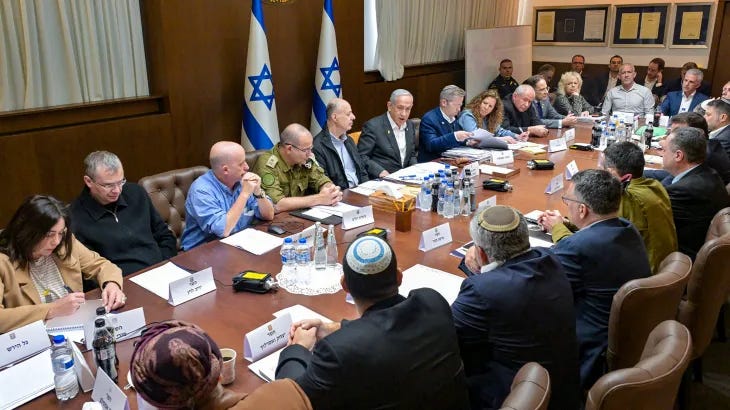Israeli Cabinet Approves Gaza Ceasefire Agreement with Hamas
Captives to Be Exchanged for Palestinian Prisoners as Deal Takes Effect Sunday
After more than 15 months of intense conflict, Israeli Prime Minister Benjamin Netanyahu’s cabinet has approved a ceasefire agreement with Hamas, set to begin on Sunday. The deal includes the exchange of Israeli captives held in Gaza for Palestinian prisoners detained in Israeli jails.
The Israeli government ratified the agreement early Saturday morning following a six-hour meeting. In a statement, Netanyahu’s office confirmed: “The Government has approved the framework for the return of the hostages. The framework for the hostages’ release will come into effect on Sunday.”
Despite strong opposition from hardline members of Netanyahu’s cabinet, the deal passed with 24 ministers in favor and eight against. The Israeli security cabinet had already given its approval on Friday.
Ceasefire Terms and Prisoner Exchange
The ceasefire will begin with an initial six-week phase during which captives held in Gaza will be released in exchange for Palestinian detainees. This marks the first step toward ending a conflict that has resulted in over 46,788 Palestinian deaths and more than 110,453 wounded.
As part of the agreement, Israeli authorities released an updated list of 737 Palestinian prisoners to be freed in the first phase, scheduled to begin at 4 p.m. local time (14:00 GMT) on Sunday. The list includes members of Hamas, Palestinian Islamic Jihad, and the Palestinian Authority’s ruling Fatah movement, some of whom are serving life sentences, according to The Times of Israel.
Al Jazeera’s Stefanie Dekker reported: “Thirty-three Israeli captives exchanged for around 1,700 Palestinian prisoners over 42 days. But despite the Israeli government ratifying the ceasefire, opposition remains strong among right-wing factions within Netanyahu’s coalition.”
Implementation and International Mediation
The United States, Qatar, and Egypt played key roles in brokering the ceasefire. Brett McGurk, the lead U.S. negotiator, stated that the White House expects the truce to take effect Sunday morning, with three female captives released by the afternoon via the Red Cross. Additional releases will follow in stages over the coming weeks.
Although the ceasefire was announced on Wednesday, Israeli airstrikes on Gaza have continued, with nearly 120 Palestinians killed since the announcement.
Humanitarian Aid and Regional Implications
The ceasefire is also expected to bring a much-needed increase in humanitarian aid to Gaza. On Friday, aid trucks lined up at the Egyptian side of the Rafah border crossing, preparing to enter the war-ravaged territory.
An Israeli military delegation arrived in Cairo on Friday to discuss reopening the Rafah crossing. Meanwhile, Israeli forces will withdraw from several areas in Gaza during the first phase, allowing hundreds of thousands of displaced Palestinians to return to what remains of their homes in the north. However, the Israeli military has warned that any perceived threats to its forces will be met with force.
Future Governance of Gaza
The ceasefire has reignited discussions about Gaza’s future governance. The Palestinian Authority (PA) announced on Friday that it is prepared to take full administrative responsibility for the Gaza Strip. A PA statement, cited by the Palestinian news agency Wafa, reiterated that President Mahmoud Abbas's administration has legal and political jurisdiction over Gaza, as well as the occupied West Bank and Jerusalem.
While Hamas has governed Gaza since 2007, Israeli and Arab media report that the PA has sent a delegation to Egypt to discuss managing the Rafah crossing, signaling a potential shift in control of the key border point.
As the ceasefire takes effect, questions remain over its durability and the long-term future of Gaza. With tensions high and opposition still strong among Israeli hardliners, the coming weeks will be a crucial test for peace in the region.


